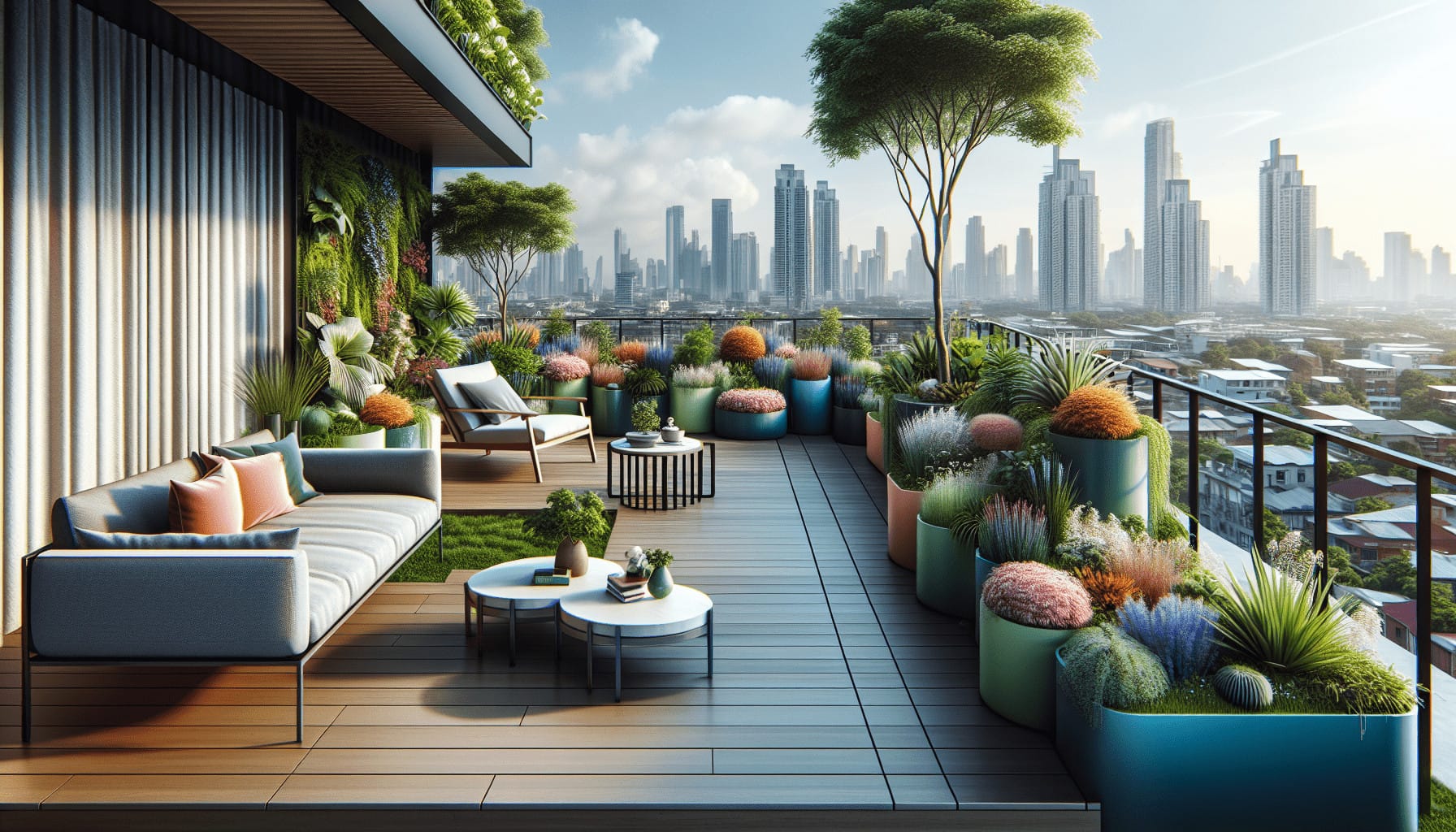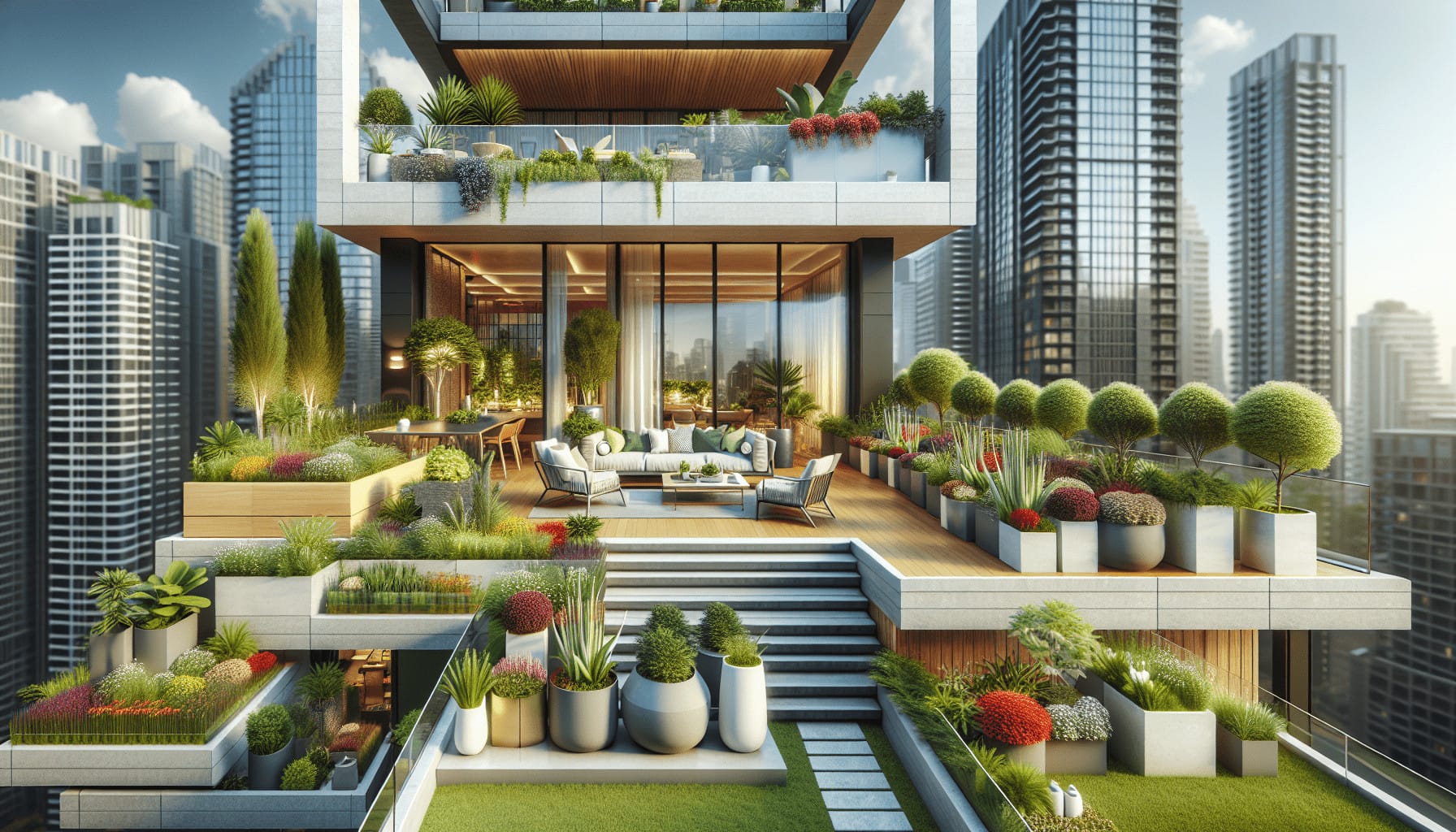How To Incorporate A Rooftop Garden Into Your Home’s Overall Design
Imagine stepping out onto your rooftop and being greeted by a lush garden full of vibrant plants and flowers. Incorporating a rooftop garden into your home’s overall design can not only enhance the aesthetic appeal of your space but also provide numerous benefits for your mental and physical well-being. In this article, we will explore the various ways you can incorporate a rooftop garden into your home’s design, from selecting the right plants to creating a functional and beautiful outdoor space that you can enjoy year-round.

Benefits of a Rooftop Garden
Having a rooftop garden can offer a wide range of benefits, both for you and the environment. Not only does it create a visually appealing space, but it also helps improve air quality, reduce energy costs, and provide a sanctuary for local wildlife. Additionally, gardening has been shown to reduce stress and anxiety, making it a great way to unwind and connect with nature right in your own home.
Benefits for You
The benefits of having a rooftop garden extend far beyond just aesthetics. Research has shown that spending time in nature can have a positive impact on your mental health, reducing feelings of stress and anxiety. By incorporating a rooftop garden into your home’s design, you can create a peaceful retreat where you can relax and unwind after a long day.
Benefits for the Environment
Rooftop gardens can also play a crucial role in improving the environment. By adding green space to urban areas, rooftop gardens help reduce the heat island effect, lower energy costs, and improve air quality. Plants and trees absorb carbon dioxide and release oxygen, making them a natural air purifier that can benefit both you and your community.
Planning Your Rooftop Garden Design
Before you start selecting plants and designing your rooftop garden, it’s crucial to carefully plan out your space to ensure that it meets your needs and complements your home’s overall design. Consider factors such as the amount of sunlight your rooftop receives, the weight-bearing capacity of your roof, and any local regulations or restrictions that may impact your garden design.
Assessing Your Space
Take the time to assess your rooftop space, paying attention to factors such as sunlight exposure, wind patterns, and access to water. Knowing these details will help you determine which plants will thrive in your rooftop garden and allow you to plan out the layout of your space more effectively.
Choosing the Right Plants
Selecting the right plants for your rooftop garden is essential to ensure their long-term health and success. Consider factors such as the amount of sunlight your rooftop receives, the climate in your area, and the weight-bearing capacity of your roof. Opt for native plants that are well-suited to your region and require minimal care to thrive in a rooftop garden setting.
Designing Your Rooftop Garden
Once you have assessed your rooftop space and chosen the right plants for your garden, it’s time to start designing your outdoor oasis. From creating designated seating areas to incorporating vertical gardens and decorative elements, there are countless ways to enhance the aesthetic appeal of your rooftop garden while maximizing its functionality.
Creating Seating Areas
Incorporate comfortable seating areas into your rooftop garden to create a welcoming space where you can relax and entertain guests. Whether you opt for a cozy outdoor sofa, a set of lounge chairs, or a dining table with chairs, adding seating areas to your rooftop garden will make it a more inviting and functional space for you to enjoy.
Adding Vertical Gardens
If you’re working with limited space on your rooftop, consider adding vertical gardens to maximize your planting area. Vertical gardens are a great way to incorporate more greenery into your space without taking up valuable square footage. You can create vertical gardens using hanging planters, trellises, or living walls to add visual interest and depth to your rooftop garden design.
Incorporating Decorative Elements
Enhance the visual appeal of your rooftop garden by incorporating decorative elements such as outdoor lighting, garden sculptures, and water features. These elements can add personality and charm to your outdoor space, transforming it into a tranquil retreat where you can escape the hustle and bustle of daily life. Consider adding string lights for a cozy ambiance, a bubbling fountain for a touch of serenity, or a statement sculpture as a focal point for your rooftop garden design.
Maintaining Your Rooftop Garden
Once you have designed and installed your rooftop garden, it’s crucial to maintain it properly to ensure its long-term health and beauty. Regular maintenance tasks such as watering, pruning, fertilizing, and pest control are essential to keeping your plants thriving and your rooftop garden looking its best throughout the year.
Watering
Proper watering is essential to the health of your rooftop garden, especially during hot summer months. Be sure to water your plants regularly, taking care not to over-water or under-water them. Consider installing a drip irrigation system to ensure that your plants receive the right amount of water consistently and efficiently.
Pruning
Regular pruning is necessary to keep your plants looking tidy and healthy. Trim back overgrown branches, dead or damaged foliage, and spent flowers to promote new growth and maintain the shape of your plants. Proper pruning can also help prevent disease and pest infestations, ensuring that your rooftop garden remains vibrant and lush.
Fertilizing
Fertilizing your plants regularly can help replenish essential nutrients in the soil and promote healthy growth and blooming. Choose a high-quality, organic fertilizer that is suited to the needs of your plants and apply it according to the manufacturer’s instructions. Be mindful not to over-fertilize your plants, as this can lead to nutrient imbalances and damage to their roots.
Pest Control
Keep an eye out for common garden pests such as aphids, spider mites, and whiteflies that can damage your plants and diminish the beauty of your rooftop garden. Implement natural pest control methods such as introducing beneficial insects, using insecticidal soaps, and applying neem oil to prevent pest infestations and protect your plants without harming the environment.

Conclusion
Incorporating a rooftop garden into your home’s overall design can transform your outdoor space into a beautiful and functional oasis that you can enjoy year-round. By carefully planning your garden design, choosing the right plants, and maintaining your garden properly, you can create a rooftop garden that not only enhances the aesthetic appeal of your home but also provides numerous benefits for your well-being and the environment. Whether you’re looking to create a peaceful retreat, improve air quality, or attract local wildlife, a rooftop garden is a versatile and rewarding addition to any home. So why not start planning your rooftop garden today and bring a touch of nature to your urban dwelling?
